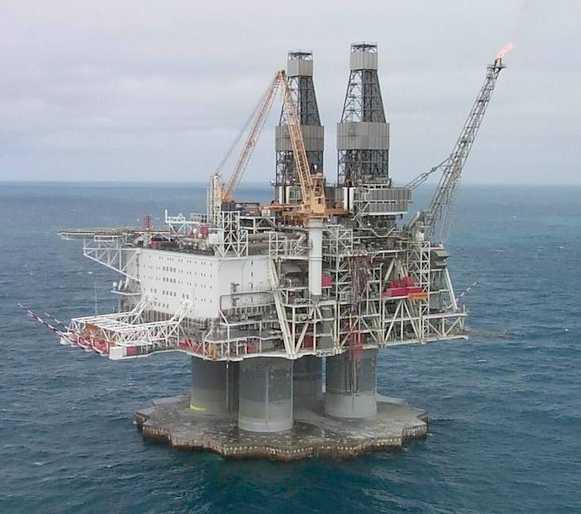Source: Kent Moors, Oil & Energy Investor (5/25/12)
"The rising tension between Tehran, on the one hand, and Washington and Brussels, on the other, is still the single most serious geopolitical element impacting the global oil market today."
It's Iran again.
Actually, it has never stopped being about Iran, ever since the West passed heavy sanctions and the European Union decided to end all Iranian crude oil imports beginning July 1.
I know I keep going back to this issue, but it's for one very simple reason.
The rising tension between Tehran, on the one hand, and Washington and Brussels, on the other, is still the single most serious geopolitical element impacting the global oil market today.
And now the matter is finally reaching a head.
This afternoon I'll be on Fox Business to talk with journalist Ashley Webster about the Iranian crisis.
But I thought I would fill you in beforehand.
Here's the gist of what I will be telling Fox this afternoon.
Even After Two Days of Meetings
Two days of meetings have just concluded in Baghdad, between Iran and the six major powers (the five permanent members of the UN Security Council, plus Germany). There was some spin applied in the rhetoric before and after the meetings, but the conclusion is strikingly clear.
Absolutely nothing was accomplished.
The next set of talks is scheduled to take place in Moscow on June 18 and 19, but time is running out.
Iran is now looking at losing one-quarter of its monthly oil exports, with no alternative markets for that oil in sight. That's right—the Chinese have decided against becoming the "importer of last resort" for Iran. And their primary shipping insurers have knuckled under before the sanctions and are no longer covering Iranian crude consignments.
The sanctions have also made it difficult—on purpose—for Tehran to access international banking networks to exchange currency from the sales it does make. That means it costs Iran more to use indirect, and often shadowy, ways of moving money, squeezing even further the profits from sales.
Rather important for a nation whose national budget is dependent upon oil sales for 90% of its revenue. . .
Yet as we approach July 1, the imminent problems are not all on Iran's side.
The EU is Going to Feel the Effects, Too
Eleven EU countries import oil from Iran each month.
For most of them, the transition to other suppliers is a possibility to make up the difference—especially imports from Libya, where oil has come back on line quicker than anticipated.
However, for the three European countries most affected, the situation is quite different. Unfortunately, these three nations are also the three southern-tier EU members (at least for the moment) with the most acute financial problems.
Greece has been importing at least 30% of its oil from Iran monthly; Spain 14%, and Italy 13%.
Saudi Arabia has agreed to make up the volume difference, but only through the first delivery cycle, and without guaranteeing any pricing floor. The EU still has not worked out how it will compensate for deliveries past that, should the embargo last for any length of time.
So what's going to happen?
Iran believes Europe will have to blink first in this ongoing game of diplomatic "chicken." Tehran has a single objective in these talks: play for time.
And, oh yes, stronger sanctions are working their ways through the halls of the U.S. Congress, assuring that the situation for a recalcitrant Iran will only become worse.
Meanwhile, the effect on global oil prices will only become more acute as the embargo kicks in.
Oil may be trading at around $91/barrel (WTI) right now.
But that's temporary.
The only reason we have not seen this rise in prices taking shape earlier is because of the current European sideshows following the French and Greek elections. The Continental angst has created ripples of demand concerns on both sides of the Atlantic, promoting a short-term (and emotionally led) retreat in oil prices.
The pricing reversal in the other direction will follow in lock-step with the collapse in the talks between Iran and the global powers.
Already, my Moscow oil contacts are concluding that nothing of consequence will take place there next month, either. Actually, some think the embargo may even help increase Russian imports to Europe.
Brussels, however, certainly does not want to become more dependent upon Russian oil, since it is already dealing with the problem of being overly reliant on Russian natural gas.
So, what is the likelihood that those talks will collapse? If I were handicapping that eventuality, I would currently put that collapse as a 90% probability. Why? Because both sides have put down demands that the other cannot meet.
During the initial April meeting in Istanbul, the Iranian delegation required that the West suspend their sanctions before Tehran would discuss its nuclear program. While the Vienna-based International Atomic Energy Agency (IAEA) is holding out some hope for a renewed round of inspections, we have been down that road many times before. It is a non-starter. The West will not agree to freeze the sanctions first.
For their part, the U.S. and the EU have laid down three non-negotiable requirements before they will annul the embargo and the sanctions. These require that Iran to:
- end all purification of uranium (both to the 20% and 3% levels);
- move all uranium currently purified out of the country; and
- open up the super-secret and heavily fortified underground installation at Fordo near the sacred city of Qom to full international access.
Iran will never agree to the last two; probably not to the first one either.
Absent the rise of another Neville Chamberlain and another Munich-like appeasement, we have a Texas standoff here.
And that assures increasing tensions, rising volatility in prices and a very interesting summer in the oil markets.
Kent Moors
Oil & Energy Investor












